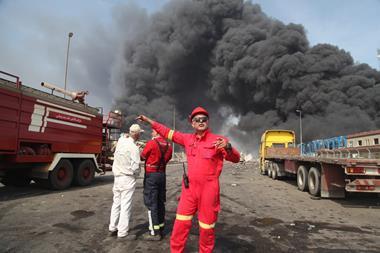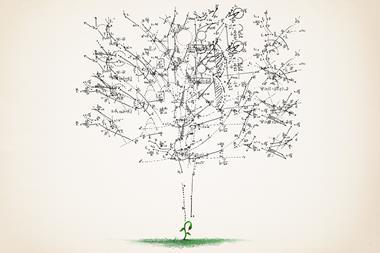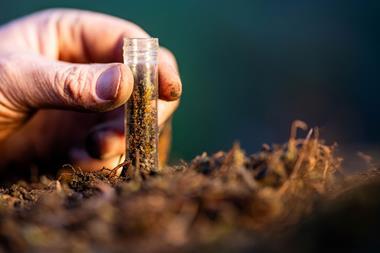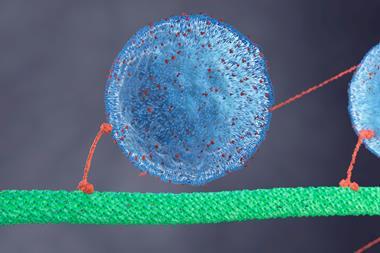
C P Snow, the subject of Mathew Waugh’s ’Last retort’ (Chemistry World, December 2009, p88), knew and greatly admired J Desmond Bernal. Snow’s first novel The Search (1934) included a character modelled on Bernal and tells the story, in the first person, of an x-ray crystallographer born around 1901. As a civil service commissioner concerned with the distribution of scientific manpower, Snow chaired the appointments board that in 1947 tried to keep Francis Crick in the Royal Navy scientific service. Crick read The Search, which may have influenced his conviction that x-ray crystallography was the route to ’the secret of life’.
D W Jones CChem FRSC
Bingley, UK
The impression created by Mathew Waugh’s appraisal of Lord Snow is that following the retraction of his paper to Nature, Snow virtually retired to be a novelist. In fact Snow continued to teach in Cambridge, UK.
In 1939 Snow was asked by the Royal Society to assist in devising a way to ensure that university scientists were as closely involved in the war effort as possible. He was directly responsible for this very important work from 1940-1946 and was then appointed a civil service commissioner with special responsibility for scientific appointments.
He retired in 1960 but was then made a life peer in the Wilson government as parliamentary secretary to the Ministry of Technology. All this experience, and the views of his wife Pamela Hansford Johnson, the distinguished novelist, helped shape Snow’s views on the two cultures.
There is no evidence to suggest that Snow was ’propelled into notoriety’ by the vitamin A paper fiasco. Clearly the Royal Society did not consider this to be the case. It would have been good to have seen a more balanced and informed contribution to what remains a core issue in the position and contribution of science to society
M White FRSC
Horsham, UK
The ’Last retort’ on C P Snow took me right back to the late 1960s when I served for a while under another well-known novelist William Cooper (1910-2002) who was a disciple of Snow’s. After the war Cooper, whose real name was Harry Hoff, worked for the Civil Service and was commissioned to head up a unit created to reverse the scientific ’brain drain’ to North America. This he did by recruiting a team of public sector scientists to tour major US and Canadian cities to interview British scientists who now wished to return home to live. As a chemist working for the UK Atomic Energy Authority at Harwell, I was recruited to the team and served under Harry Hoff on two tours of duty in Washington, DC and Chicago. We were looking for quality candidates for posts in the Civil Service, the UK Atomic Energy Authority, the Post Office, the Medical Research Council, the Agricultural Research Council, and similar organisations.
Harry Hoff was a remarkable man. He had great skills in interviewing techniques, in observational psychology and in assessing a candidate, often with only the faintest idea what he was talking about. He had no real background in science and was a bit of a charlatan who could talk confidently about electron spin resonance, photoelectron spectroscopy or whatever, having picked up the patter as he went along. Nevertheless, his judgement was shrewd indeed and he rarely misjudged a candidate.
Truly, Harry Hoff was someone who bridged Snow’s ’two cultures’ of literature and science. My life was the better for having known him.
R Dell CChem FRSC
Abingdon, UK
The picture painted by the article Nuclear waste research resurfaces (Chemistry World, January 2010, p12 ) does not present a very helpful or accurate picture of the nature of problem at hand. Whilst the statement of Francis Livens, professor of radiochemistry at the University of Manchester that:
’In recent years we have recognised where we do not have relevant expertise, [concerning radioactive waste management ]and that is a first step towards dealing with these pressing problems. We are starting at a very low base along what will be a long and complex journey.’
is welcome for its frankness and honesty - the more so since Livens is a member of the Government Advisory Committee CoRWM (Committee on Radioactive Waste Management) - Livens has made this statement in the context of the government’s recent announcement that it is satisfied that effective arrangements would be available to deal with the wastes that would be generated if the proposed New Build reactor programme were to go ahead.
However, Livens is incorrect to state (at the start of the article) that nuclear waste has essentially been ignored for the last 40 years. In fact there was a very extensive research programme carried out by the HMIP (Her Majesty’s Inspectorate of Pollution) over a period of nearly 10 years. This research has been written up and is available on disc from the Environment Agency. Similarly Nirex (the nuclear industry radioactive waste executive) produced a number of research reports on nuclear waste
The critical point to realise is that this extensive programme of research was subject to an intense programme of scrutiny at a four month Public Inquiry in the 1990s - a process that demanded a documented evidence base - together with cross-examination.
The conclusion reached by the Planning Inspector was that the nuclear industry should not be given the go-ahead:
’in [its] current state of inadequate knowledge’
Livens is right to point out that there is a sparsity of current UK expertise in this field but it is vital that the work done in the past is not neglected. It was inadequate certainly but it set the scene through asking the right questions. Unfortunately, both the projects described in your article together with the (January 2010) Bursary topics listed by the NDA (Nuclear Decommissioning Authority) - radiochemistry and actinide chemistry - seem to be suffused with the Jennifer Aniston approach ie ’now here’s the science’.
Radionuclides cover a very large swathe of the Periodic Table and the primary determinant of their chemical behaviour is not the fact they are radioactive. For example solubility variations of 100 million fold can turn on an oxidation state.
Given the extent of the radionuclide inventory that currently exists - together with the extraordinary complexity of its behaviour and its significant potential for harm - it is essential that we ensure that today’s problems are resolved before we magnify them through the synthesis of additional radionuclides in a New Build programme.
R Western MRSC
London, UK
After reading Nuclear waste research resurfaces, I have a question: if ’legacy waste’ is so powerful that it has to be buried deep down, why is it not being used to provide energy?
See Radioactivity and radioactive substances (1932) by J Chadwick: ’Emission of Heat. When radioactive atoms disintegrate, a considerable amount of energy is liberated in the form of radiations. On absorption of the radiations in matter their kinetic energy is transferred to the molecules of the matter and becomes manifest as heat.’ Chadwick gives an example: ’1 gram of radium in equilibrium with its products emits heat at the rate of 135 calories per hour’. In this case the heating effect is mainly due to a-rays. Does ’legacy waste’ emit no a-rays?
W R N Williamson MRSC
Slough, UK
Reading Nuclear waste research resurfaces, it was just as if time had stopped since I left the business in 1986. It goes to show what uninformed public opinion can do to destroy an industry and resource.
I was totally unsurprised to read about the continuing quest for a repository, which seems to be taking time measured in geological eras, but surprised to see what I consider dead-end research into synthetic minerals still going on as if it only started yesterday. It seemed to be all the rage 25 years ago. While I was unimpressed by our lack of understanding in the areas of incorporation of fission products in the various glass matrices available at the time, we were certainly working on it. We looked forward to ceramics in the future.
Storage in concrete of medium waste? Surely that’s routine by now.
Practical vitrification and storage on site still goes on in order to reduce the backlog of liquid waste but meanwhile, as the most useful research using the geology of the actual repostitory is on hold, what’s new?
It seems to me that the hiatus started when the Fast Reactor programme stopped. Isn’t it amazing what an ill chosen word like ’breeder’ can do.
R Lawty CChem MRSC
Auckland, New Zealand
It was gratifying to learn in Chemistry World of two initiatives which use carbon dioxide as a source of useful organic starting materials and which could potentially not only reduce emissions of the greenhouse gas but rid us of our dependence on fossil fuels.
The first report (Chemistry World, December 2009, p29) detailed work from Newcastle University on the use of new catalysts to aid the reaction of epoxides with CO2 to generate cyclic carbonates.
The second report (Chemistry World, January 2010, p27) informed us that researchers from the University of California were using bacteria to convert CO2 to isobutyraldehyde.
Sadly, there appears to be little attention being paid to the use of CO2 as a starting material for the production of organic starting materials, or at least I am ignorant of it. Clearly, we must generate additional alternatives to reducing CO2 in the atmosphere other than by reducing emissions or by underground storage.
P H Bentley CChem FRSC
York, UK
In 2009, I had the good fortune to spend three months at the Russian Academy of Sciences (RAS) in Apatity which is located just south of the Arctic Circle. Surprisingly, I am the only British scientist ever to have visited Apatity which I found rather odd in view of the importance of global warming in polar regions. Apatity is, of course, one of the world’s major centres for phosphate production.
Arctic Ocean temperatures increased by about 0.6?C between 1982 and 2009. As a result, there has been a steady decline in the thickness of Arctic ice. For example, the average extent of sea ice has declined from 8.2 x 106 km2 in 1979 to 6.3 x 106 km2 in 2009, a decrease of 23 per cent in 20 years. Similarly, ice thickness at the North Pole has decreased by 50 per cent between 1958?-1976 and 2003-2007. The results suggest that Arctic multi-sea ice will disappear in summer within 20-30 years. The situation in the Antarctic appears to be even more extreme with the Antarctic Peninsula warming by 3?C between 1983 and 2009. This led to the collapse of the Larsen B Ice shelf in 2002. Some estimates suggest that sea level could rise by more than 40 cm by the end of the century.
Melting of the Arctic and Antarctic ice sheets would pose major problems for an overpopulated planet in the late 21st Century.
Over the past 20 years, atmospheric CO2 concentrations at Mouna Lau Observatory in Hawaii have increased from about 350 parts per million (ppm) in 1989 to about 388 ppm in 2009, an increase of about 11 per cent. If atmospheric CO2 concentrations continue to increase at this rate for the rest of the century, the atmospheric CO2 concentration in 2100 would be about 435 ppm.
In addition, world population will be significantly higher in 2100. One estimate suggests that the median value world population will peak around 2070 at nine billion people and then slowly decreases to 8.4 billion by 2100.
In Russia itself, environmental stewardship is not a strong point. There are several major types of environmental impacts in the Russian Arctic as a result of waste discharges during offshore oil and gas activity, smelting of ore deposits to produce metals and nuclear weapons testing. Pollution is a serious problem wherever smelting is taking place. In such areas, the landscape is often degraded to a barren wilderness as far as the eye can see.
Global warming will be the most pressing problem faced by mankind over the course of the 21st Century. The most dramatic effects of global warming will occur in polar regions. Deep cuts in atmospheric CO2 emissions are a prerequisite for maintaining a stable environment into the future.
G P Glasby
UK
The article on shortages of materials required for medical procedures was interesting, but from a considered point of view the term that it used almost 20 times is the wrong one (Chemistry World, January 2010, p7). Isotope (literally, the same place) denotes a mutual relationship, used for atomic species of the same atomic number, and thus occupying the same spot on the Periodic Table, for example 35 Cl and 37 Cl.
However the radioactive substances used in the diagnosis or in the treatment of disease do not belong to one particular element. To call them isotopes, as is repeatedly done in your article, is as illogical as saying that Gordon Brown and David Cameron are brothers. Both these men have brothers, and both are brother to their respective brothers, but they are not brothers of each other.
It would be much less sophomoric to call these materials, to be used in diagnosis and treatment, radionuclides, meaning species of nuclei that are radioactive.
S R Logan FRSC
Portstewart, N Ireland, UK
The letters from Mike Thayer and Gerald Comley in the December 2009 and January 2010 editions of Chemistry World prompted me to add a similar tale of the start of a career in the latter part of the second world war and the subsequent ramifications of that long ago decision.
In 1944 I attended an intermediate BSc evening course at The Polytechnic, Regent Street (now the University of Westminster) and following that an evenings-only Honours BSc course at Chelsea Polytechnic (now the University of Surrey) but before completing the course Hons Chemistry degree courses for evening students were discontinued as were similar Grad RIC courses at Chelsea Polytechnic. As a consequence I enrolled at the Borough Polytechnic (now London South Bank University) where evening-only students were admitted to the Grad RIC course. Finally, after moving away from London I enrolled at a day release Grad RIC course at Oxford Polytechnic (now Oxford Brookes University). I graduated in 1957.
My first job as a laboratory assistant was at the J Lyons & Co Ltd laboratories in Hammersmith where I was initiated into the disciplines of standard solutions which were the basis of the analytical procedures used in the laboratory (ie wet chemistry) a regime using pipettes and burettes altogether a relic of the past! However, in the three years that I was there the experience extended to analysis of various foodstuffs, including milk, cream, ice cream, meat products, jam, marmalade, fruit pulps and the vitamin content of several of them. It may be of interest that the ’jam’ content of Lyons Swiss Rolls was, during wartime sugar shortage, made from potatoes, the carbohydrate content of which had been converted to sugar by an enzyme process. The unattractive appearance of this product was rendered acceptable by the addition of appropriate dyes!
A short period following this was with Donald MacPherson & Co paint manufacturers as an assistant chemist in the laboratory analysing and assessing pigments and various polymers. The noise from the huge ball bills located immediately adjacent to the laboratory would not now I believe meet Health and Safety regulations and I certainly found it intolerable and left.
The British Oxygen Co Ltd Research Laboratories at Morden was where I continued to extend my knowledge of the world of chemistry for the next nine years. Here I worked on cyanamide, dicyandiamide and melamine and following that cyclo-octa-tetrazene and some polycyclic derivatives of it. Much of this latter work was published in the Journal of the Chemical Society by W O Jones.
An opportunity to rent a house was offered by the Atomic Weapons Research Establishment at Aldermaston and as I needed one, having recently married, I joined this enterprise in 1955. This was the start of an involvement with explosives which lasted some 40 years. First with high explosives at Aldermaston and following joining the MoD Chemical Inspectorate initiatory explosives at Royal Ordnance Factory Chorley, high explosives and plastic propellants at Royal Ordnance Factory, Bridgwater, single and double base rocket and gun propellants at Royal Ordnance Factory, Bishopton and then on joining the Chief Inspector of Naval Ordnance organisation at Bath all the ordnance embarked on navy ships, submarines, aircraft, fleet auxilaries and naval armament depots. Finally, after retiring in 1987 I was re-employed by the Ordnance Board to join a NATO project first in Columbia, Maryland, US and then finally at Nato Headquarters in Brussels. I retired as Secretary of the steering committee for this project in 1996.
Since then I have been a member and Secretary of the RSC Management Group Committee. Although this may not be a typical example of a career in chemistry I hope it will serve as an illustration of the wide variety of subjects and interests that a decision to become a chemist may entail.
E S Norton CChem MRSC
UK












No comments yet